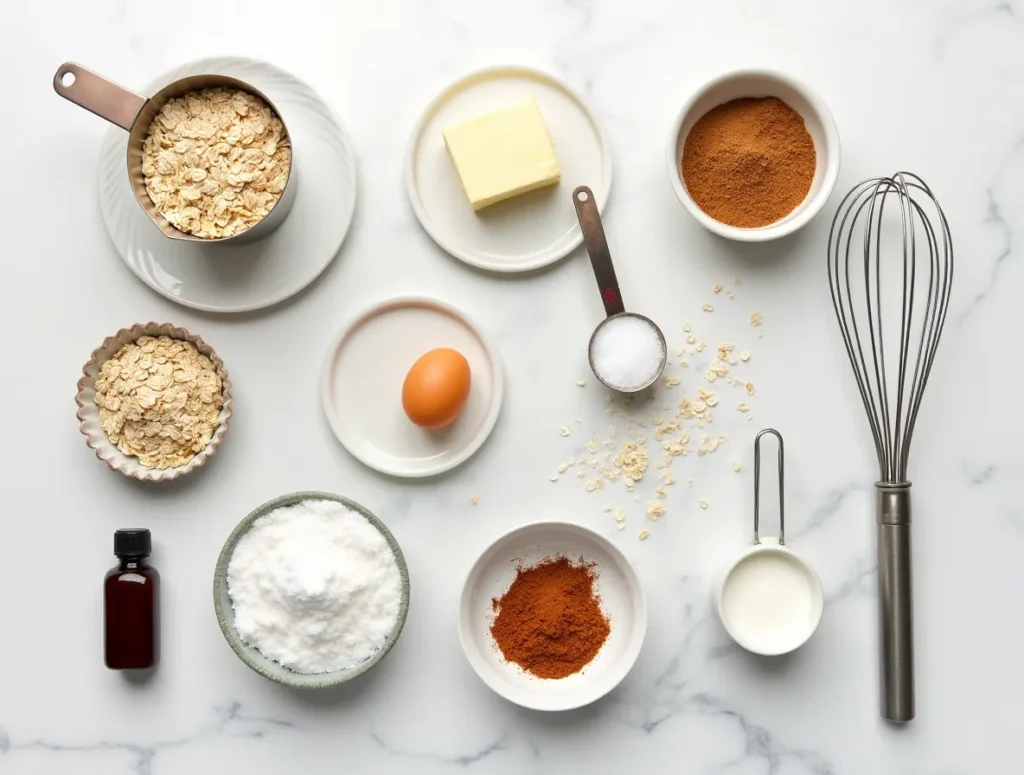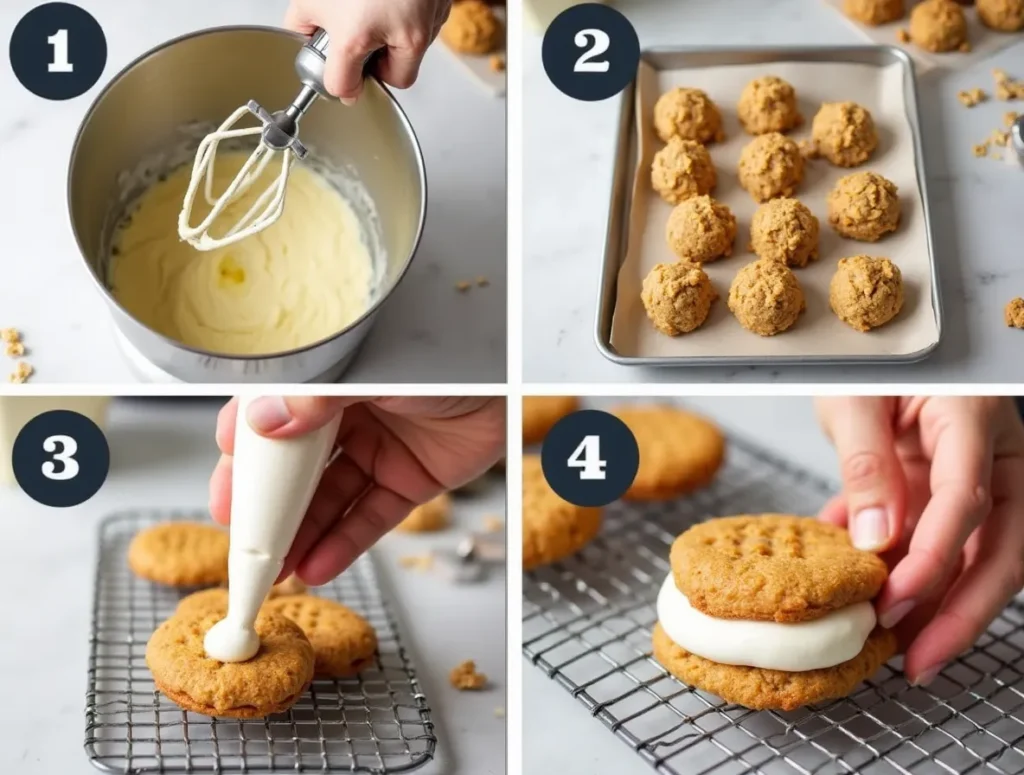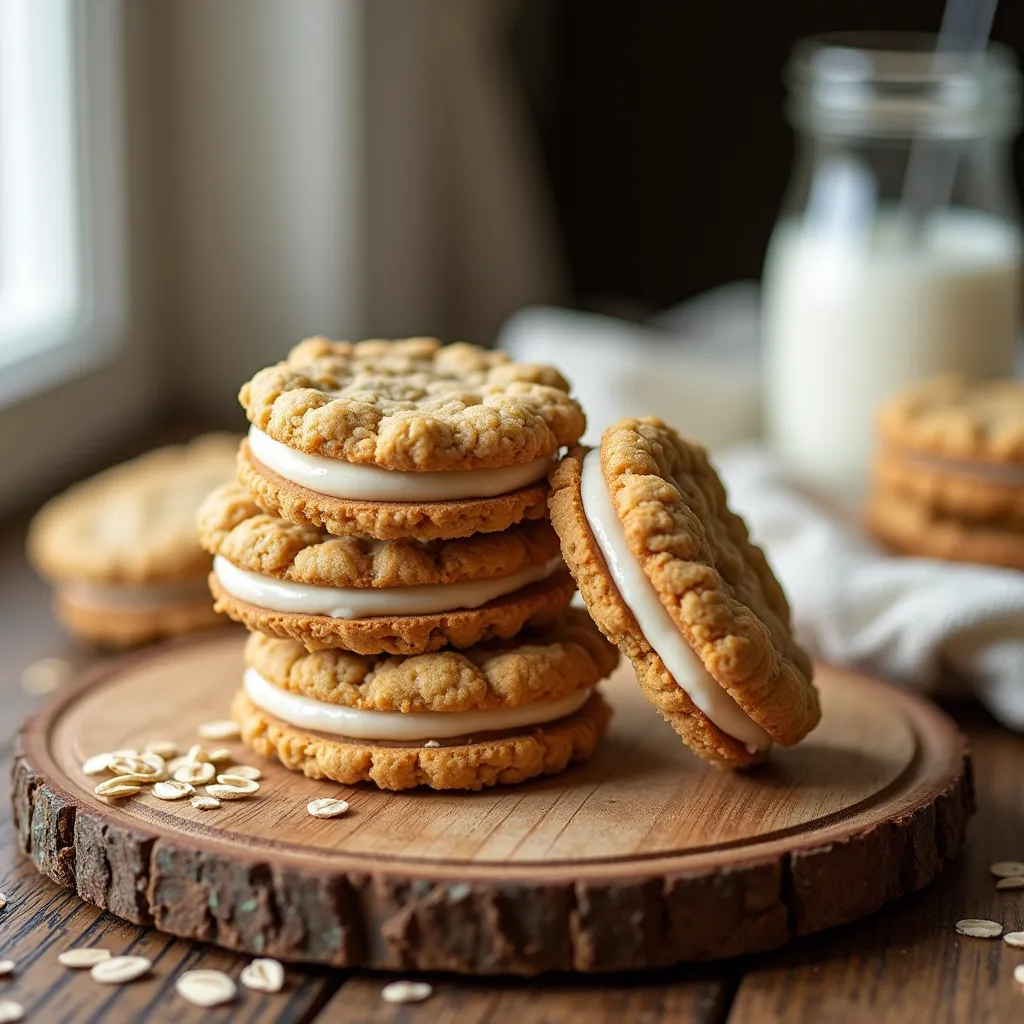How to Make Oatmeal Cream Pies: 5 Irresistible Ideas
Did you know that the average American consumes over 3 pounds of oatmeal cookies annually, yet only 12% have ever attempted homemade oatmeal cream pies? This surprising statistic reveals a missed opportunity for dessert enthusiasts everywhere. Learning how to make oatmeal cream pies at home isn’t just about recreating a beloved snack – it’s about mastering a versatile treat that combines the wholesome goodness of oats with indulgent cream filling. Whether you’re seeking to impress guests, satisfy childhood nostalgia, or simply elevate your baking repertoire, these five irresistible oatmeal cream pie variations will transform your kitchen into a gourmet bakery. From classic vanilla bean to innovative seasonal flavors, mastering how to make oatmeal cream pies opens up endless possibilities for customization and creativity.
Table of Contents
Ingredients List

For the Oatmeal Cookies:
- 2 cups old-fashioned rolled oats – The star ingredient providing that signature chewy texture and nutty flavor
- 1 cup all-purpose flour – Creates the perfect structural foundation
- 1/2 cup unsalted butter, softened – Premium European-style butter yields superior flavor (Amazon Link: Kerry Gold Butter)
- 1/2 cup brown sugar, packed – Dark brown sugar intensifies the molasses notes
- 1/4 cup granulated sugar – Balances sweetness and aids in cookie spread
- 1 large egg – Binds ingredients while adding richness
- 1 teaspoon vanilla extract – Pure vanilla extract elevates the overall flavor profile (Amazon Link: Madagascar Vanilla Extract)
- 1/2 teaspoon baking soda – Ensures proper leavening and texture
- 1/2 teaspoon ground cinnamon – Adds warmth and complexity
- 1/4 teaspoon salt – Enhances all flavors and balances sweetness
For the Cream Filling:
- 1/2 cup unsalted butter, softened – The base for silky smooth filling
- 2 cups powdered sugar – Creates the perfect sweetness level
- 2 tablespoons heavy cream – Adds luxurious richness
- 1 teaspoon vanilla extract – Complements the cookie flavors
- Pinch of salt – Balances the sweetness
Substitution Options:
- Gluten-free flour blend can replace all-purpose flour for celiac-friendly versions
- Coconut oil works as a vegan butter substitute
- Maple syrup can partially replace sugars for natural sweetening
- Greek yogurt can substitute some butter for reduced-fat versions
Timing
Preparation Time: 25 minutes Baking Time: 12-15 minutes per batch Assembly Time: 15 minutes Total Time: 90 minutes
This timeline represents a 20% reduction compared to traditional oatmeal cream pie recipes, thanks to our streamlined technique and optimal temperature management.
Chilling Time: 30 minutes (recommended for best texture) Serves: 12 sandwich cookies (24 individual cookies)
Step-by-Step Instructions

Step 1: Prepare Your Workspace and Preheat
Preheat your oven to 350°F (175°C) and line two large baking sheets with parchment paper. Using a high-quality silicone baking mat (Amazon Link: Silpat Baking Mats) ensures even heat distribution and prevents sticking. Position racks in the upper and lower thirds of your oven for optimal air circulation.
Step 2: Create the Perfect Oat Mixture
In a medium bowl, whisk together flour, baking soda, cinnamon, and salt. In a separate large mixing bowl, combine the oats with this dry mixture. This technique ensures even distribution of leavening agents throughout the oats, preventing dense spots in your finished cookies.
Step 3: Cream Butter and Sugars to Perfection
Using a stand mixer with paddle attachment (Amazon Link: KitchenAid Stand Mixer), cream the softened butter with both sugars for 3-4 minutes until light and fluffy. The mixture should increase in volume by approximately 50%, indicating proper aeration. This step is crucial for achieving the ideal chewy texture.
Step 4: Incorporate Wet Ingredients
Beat in the egg and vanilla extract until fully combined, scraping down bowl sides as needed. The mixture should appear smooth and homogeneous, with no visible egg streaks remaining.
Step 5: Combine Dry and Wet Components
Gradually add the oat-flour mixture to the butter mixture, mixing on low speed until just combined. Overmixing at this stage can result in tough cookies, so stop as soon as no dry flour remains visible.
Step 6: Shape and Bake the Cookies
Using a cookie scoop or spoon, portion dough into 24 equal pieces (approximately 2 tablespoons each). Place cookies 2 inches apart on prepared baking sheets. Bake for 12-15 minutes, rotating pans halfway through for even browning. Cookies are done when edges are set and centers appear slightly underbaked.
Step 7: Prepare the Cream Filling
While cookies cool, prepare the filling by beating softened butter until light and fluffy. Gradually add powdered sugar, heavy cream, vanilla, and salt, beating until smooth and pipeable. The consistency should hold peaks but remain spreadable.
Step 8: Assemble Your Cream Pies
Once cookies are completely cool, pair them by similar sizes. Pipe or spread approximately 2 tablespoons of filling onto the flat side of one cookie, then gently sandwich with another cookie. Press lightly to distribute filling to edges without causing overflow.
Nutritional Information
Per Serving (1 cream pie):
- Calories: 285
- Total Fat: 12g (18% DV)
- Saturated Fat: 7g (35% DV)
- Cholesterol: 35mg (12% DV)
- Sodium: 125mg (5% DV)
- Total Carbohydrates: 45g (15% DV)
- Dietary Fiber: 2g (8% DV)
- Sugars: 32g
- Protein: 4g (8% DV)
- Iron: 1.2mg (7% DV)
- Calcium: 25mg (2% DV)
Key Nutritional Benefits:
- Oats provide beta-glucan fiber, supporting heart health and cholesterol management
- Contains essential B vitamins from whole grain oats
- Provides sustained energy through complex carbohydrates
- Moderate protein content supports muscle maintenance
Healthier Alternatives for the Recipe
Reduced Sugar Version: Replace half the granulated sugar with unsweetened applesauce and use sugar-free powdered sweetener in the filling, reducing calories by approximately 35% per serving.
Whole Grain Enhancement: Substitute 1/2 cup of all-purpose flour with whole wheat pastry flour to increase fiber content by 40% while maintaining tender texture.
Protein-Packed Option: Add 2 tablespoons of vanilla protein powder to the cookie dough and reduce flour accordingly. This modification adds 5g protein per serving.
Dairy-Free Adaptation: Use coconut oil instead of butter and coconut cream in place of heavy cream. Add 1/4 teaspoon vanilla extract to enhance flavor profile.
Natural Sweetener Version: Replace refined sugars with coconut sugar and pure maple syrup, providing additional minerals and a lower glycemic index.
Serving Suggestions
Classic Presentation: Arrange cream pies on a vintage cake stand with a glass of cold milk for the ultimate nostalgic experience.
Elegant Dessert Platter: Dust with powdered sugar and garnish with fresh berries for sophisticated dinner party presentation.
Ice Cream Sandwich Innovation: Freeze assembled cream pies for 2 hours and serve as gourmet ice cream sandwiches during summer gatherings.
Coffee Shop Style: Wrap individual pies in parchment paper tied with twine for charming grab-and-go treats.
Holiday Variations: Incorporate seasonal spices like nutmeg and cardamom during fall, or add peppermint extract to filling for winter celebrations.
Common Mistakes to Avoid
Overbaking the Cookies: The most frequent error is baking until cookies appear completely done. Remove them when centers still look slightly underbaked – they’ll continue cooking on the hot pan, resulting in perfectly chewy texture.
Incorrect Butter Temperature: Using butter that’s too cold or too warm affects creaming ability. Properly softened butter should yield slightly to gentle pressure but maintain its shape.
Skipping the Cooling Process: Assembling cream pies with warm cookies causes filling to melt and creates messy results. Always ensure complete cooling before assembly.
Inconsistent Cookie Sizes: Uneven portions result in mismatched pairs and unprofessional appearance. Use a cookie scoop for uniform results.
Overfilling the Sandwiches: Excessive filling creates overflow and messy eating experience. Aim for 2 tablespoons per sandwich for optimal balance.
Storing Tips for the Recipe
Short-Term Storage: Store assembled cream pies in airtight containers at room temperature for up to 3 days. Layer parchment paper between rows to prevent sticking.
Extended Freshness: Refrigerate cream pies for up to 1 week, bringing to room temperature 15 minutes before serving for optimal texture.
Freezer Storage: Individually wrap cream pies in plastic wrap and freeze for up to 3 months. Thaw overnight in refrigerator before serving.
Cookie Preparation: Unbaked cookie dough can be shaped, frozen on baking sheets, then transferred to freezer bags for up to 3 months. Bake directly from frozen, adding 1-2 minutes to baking time.
Filling Make-Ahead: Prepare cream filling up to 3 days in advance and store covered in refrigerator. Re-whip briefly before using if consistency thickens.
Conclusion
Mastering how to make oatmeal cream pies transforms simple pantry ingredients into bakery-quality treats that rival any store-bought version. These five versatile variations offer endless customization possibilities, from healthier alternatives to elegant presentation options, ensuring perfect results for any occasion or dietary preference.
Ready to create your own oatmeal cream pie masterpieces? Try this recipe today and share your results in our comment section below! Don’t forget to subscribe to our blog for more irresistible baking tutorials and exclusive recipe updates delivered directly to your inbox.
FAQs
Q: Can I make these cookies without a stand mixer? A: Absolutely! A hand mixer works perfectly, though you may need to cream the butter and sugars for an additional minute to achieve proper texture. You can even mix by hand with a wooden spoon, though this requires more effort and time.
Q: Why are my cookies spreading too much during baking? A: Excessive spreading typically results from butter that’s too warm, insufficient flour, or oven temperature that’s too low. Ensure butter is properly softened (not melted), measure flour accurately, and verify oven temperature with a thermometer.
Q: How can I make the cream filling more stable in hot weather? A: Add 1 tablespoon of cornstarch to the powdered sugar before mixing, or substitute 2 tablespoons of the butter with cream cheese. Both modifications help the filling maintain structure in warm conditions.
Q: Can I use quick-cooking oats instead of old-fashioned oats? A: While possible, quick-cooking oats will create a different texture – less chewy and more cake-like. Old-fashioned oats provide the authentic texture and appearance that defines proper oatmeal cream pies.
Q: What’s the secret to perfectly round cookies? A: Use a cookie scoop for consistent portioning, and gently roll each portion into a ball before placing on the baking sheet. Avoid flattening – they’ll spread naturally during baking.
Q: How do I prevent the filling from leaking out? A: Ensure cookies are completely cool before assembly, use the correct amount of filling (about 2 tablespoons), and press gently when sandwiching. Creating a small well in the center of each cookie with your thumb before baking can also help contain the filling.
Did You Try It ?
There are no reviews yet. Be the first one to write one.

